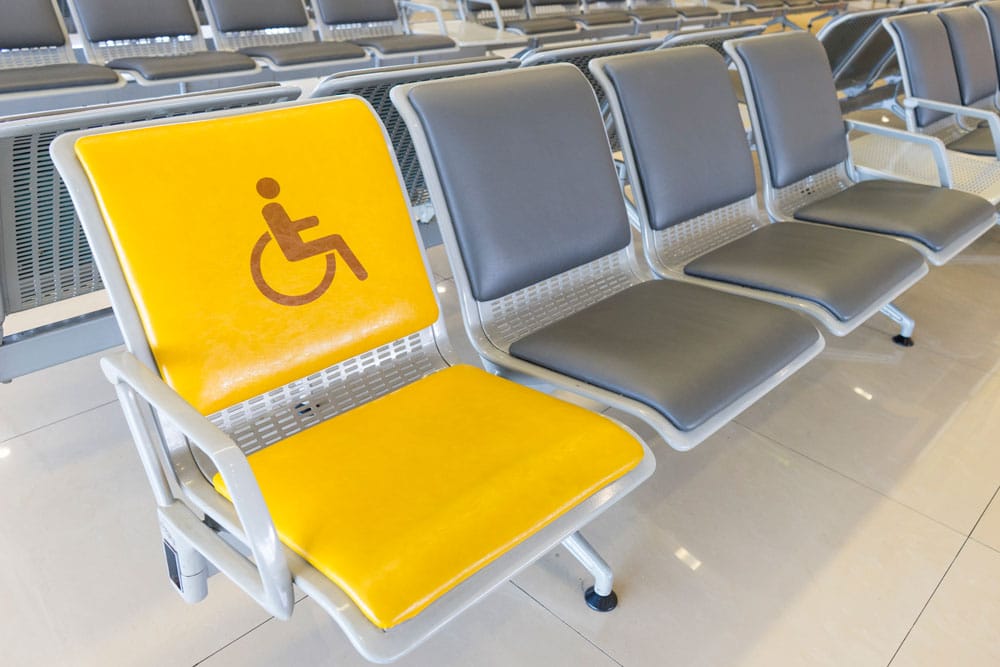The demand for accessible travel has significantly increased over time. There are now companies that specialise in accessible travel, making it (fairly) hassle-free for travellers with limited mobility. Plus, a myriad of travel blogs and resources provide help and inspiration. Read on to get our top tips for travelling with a wheelchair or a mobility scooter.
Know this – with a bit of planning, holidaying with mobility equipment can be easy and fun.
Plan, plan and plan some more!
The most important thing to remember when travelling with a wheelchair or mobility scooter is to think ahead. Be sure to check the accessibility provided by your carrier/s, hotel and destination before you set out. This can sometimes differ between domestic and international travel. The last thing you want is to embark on your well-deserved holiday, only to face accessibility challenges. So, it pays to do your research.
Booking your holiday
Some airlines, cruise ships, train services and hotels provide accessible options for full-size scooters and electric wheelchairs, while some may not. So, always call your provider to make sure they can handle your wheelchair or mobility scooter before finalising your booking.
There are many accessible travel blogs and online providers. You can easily search for airlines, trains and cruises with accessible options. Here are a few to help you get started:
Make sure your equipment is suited to where you’re going
It’s also important to consider the type of wheelchair or mobility scooter you plan to use whilst travelling. While a lot of wheelchairs and mobility scooters are equipped to handle all types of terrains, certain models may struggle. Such as, rolling over cobblestone streets, hilly terrain or wet weather. We suggest contacting your manufacturer and/or supplier to ask about whether your equipment is suitable for your destination.
Wheels aren’t the only consideration to make when travelling. There are many accessories you can buy for your wheelchair to make your trip more enjoyable. For instance, a device holder or portable ramp.
Prepare for emergencies
It’s vital to plan for emergencies if you plan to take your wheelchair or mobility scooter with you. At a minimum, we suggest carrying spare batteries and inner tubes (if appropriate) in case you blow a tyre. We also recommend finding and contacting mobility equipment shops close to your accommodation. This will be useful if you need a technician if you have an accident or breakdown.
Some maintenance or service before your trip is a great way to ensure your equipment runs smoothly whilst away.
If you’re flying with your mobility equipment
Most airlines have their own policies for carrying mobility aids like wheelchairs, so it’s important that you speak to them directly when booking your ticket. When you contact the airline, they will want to know certain details about your wheelchair or mobility scooter to make sure it can be carried safely.
This is also important if your equipment has a battery, so be sure to have a record of these aspects on you before you call:
- Make and model
- Batteries type – lithium, gel or lead
- Battery size – voltage and amp-hours
- Battery weight
Some batteries must be removed and carried as hand luggage. If this is the case for you, we recommend making sure you have an appropriate box or carry-case. Some providers may also require verification of compliance certificate for your battery. You can obtain this from your manufacturer or supplier.
If your airline requires your wheelchair to be with cabin luggage, ask your mobility equipment supplier for advice. We suggest enquiring about the safest way to package your equipment for air travel. Baggage handlers can be careless even with fragile equipment, so it’s important that you ask an expert about packaging to minimise the potential for damage.
If your equipment is damaged when travelling with a wheelchair
No matter how careful you are, your wheelchair or mobility scooter may be damaged by baggage handlers while in transit. This is why we recommend taking photos of your equipment and the condition before you leave.
If you do notice damage to your equipment upon arrival, be sure to take photos before leaving the baggage area. Report the damage straight away while in this area and be sure to receive written proof of your complaint.
If you experience language barriers, visit the travel company’s website as quickly as you can to report the damage. Most providers require damage to be reported within 7 days in order to take responsibility for the damage. So, don’t delay.
Have insurance
For total peace of mind, it’s a great idea to insure your wheelchair or mobility scooter before you travel. If you have a pre-existing policy, make sure it covers you while you are overseas.
Blue Badge Insurance offers comprehensive cover for wheelchairs and mobility scooters. Our cover includes 21 days travel insurance at no extra cost, which can be extended for up to 6 months for a small fee. Planning a trip or embarking soon? You can start a quote online today!








